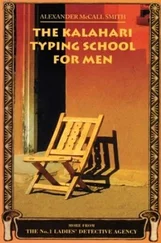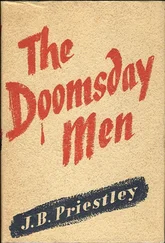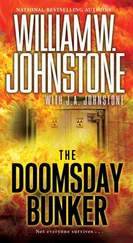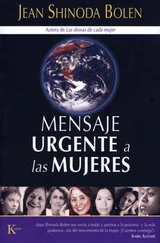According to Thomson, electrons were unimaginably small, a mere fraction of the size of the smallest atom, hydrogen, which was itself so tiny that a crowd of them ‘equal in number to the population of the whole world would be too small to have been detected by anymeans then known to science’. 33In fact, there is no consensus on its size, or even on what ‘size’ really means when applied to the electron. Estimates vary from 20,000 times smaller than an atom, right down to it being a dimensionless point. The electron possesses charge, and is responsible for creating electric fields and thus magnetic fields. These in turn give rise to electromagnetic waves: radiation across a huge spectrum of wavelength and frequency, from radio waves, through visible light, to X-rays and gamma rays. The existence of this subatomic particle was the first evidence that atoms were not solid and might even be divisible. John Dalton’s atomic theory, which had ruled unchallenged for a century, suddenly looked distinctly shaky. Was it possible that atoms could be split after all?
In 1898, J. J. Thomson’s brilliant 27-year-old assistant, Ernest Rutherford, deepened the understanding of atomic structure still further by identifying and naming alpha, beta and gamma rays as forms of radiation. All radiation is dangerous to humans but some forms are more harmful than others. Alpha radiation consists of relatively heavy particles (the positively charged nuclei of helium atoms) which can be easily stopped, even by a sheet of paper. Beta radiation is more penetrating and can cause skin injury. It consists of lighter particles, which were later realized to be electrons. Like light and X-rays, gamma rays are forms of electromagnetic radiation. They can travel several metres through air and are extremely dangerous, potentially lethal. Cobalt-60, the radioactive product of the deadly cobalt bomb discussed at the Round Table in 1950, is a powerful source of gamma radiation.
Ernest Rutherford was born in New Zealand, to where his grandfather, a wheelwright from Dundee, Scotland, had emigrated in 1843. After graduating with a double first in mathematics and physical science from Canterbury College, Christchurch, he won a scholarship to Cambridge in 1894. According to those who knew him, Rutherford never quite lost the gruff manner of a pipe-smoking colonial farmer. He was, said Paul Langevin, a ‘force of nature’. 34Another colleague compared him to a battleship ploughing through a stormy sea. A brilliant experimentalist who famously commented that all science was either physics or stamp collecting, Rutherford was notoriously sceptical about new theories. A visitor to Cambridge’s Cavendish Laboratory, which he directed in typically no-nonsense style from 1919, once asked about the significance of Einstein’s theories. ‘That stuff!’ harrumphed Rutherford. ‘We never bother with that in our work.’ 35
Following his researches with Thomson at the Cavendish, Rutherford was offered the Macdonald Chair of Physics at McGill University, Montreal, in 1898. Once there, Rutherford focused all his energies on understanding radioactivity. He had noticed that, like radium, the naturally radioactive element thorium produced a gas, or ‘emanation’ as it was then called. In October 1901 he asked the 24-year-old chemist Frederick Soddy to find out what it was. Soddy, born at Eastbourne in Sussex, had spent a couple of years researching at Oxford before taking a post as chemistry demonstrator at McGill. He recalled that at this time Rutherford was an ‘exuberant, natural young man with a moustache and breezy manner, full of the joie de vivre of the indefatigable investigator… There was a spirit of adventure about him coupled with a dogged determination to reach his quest.’ 36
The two men became acquainted at a meeting where Soddy had presented a paper on the indivisibility of the atom. He engaged in a characteristically robust debate with the physicists – including Rutherford – arguing against the existence of subatomic particles, and concluded with the comment: ‘I feel sure chemists will retain a belief in, and a reverence for, atoms as concrete and permanent entities, if not immutable, certainly not yet transmuted.’ 37But when Soddy investigated the problem Rutherford had set him, he found that the thorium emanation or ‘thoron’ was an inert gas, possibly argon (it was subsequently identified as an isotope of radon). If true, this was a shocking discovery. How was it possible that the element thorium, a solid, was turning into another element, a gas? According to Dalton and everything that Soddy had ever been taught, elements could not change. Transmuting one element into another was the preserve of alchemists.
It was true that some people, even at the dawn of the twentieth century, still clung doggedly to the dreams of alchemy. The Swedish playwright August Strindberg became obsessed with transmuting lead oxide into gold in the 1890s. He even published a text on chemistry, Antibarbarus , in 1894 and claimed to have successfully created gold. Despite his hopes of winning the Nobel Prize in Chemistry, few believed him, due in part to his unconventional views on science. Strindberg had once been spotted by the owner of an open-air restaurant injecting an apple hanging from a tree with a syringe full of morphia. When the worried owner asked what he was doing, Strindberg replied that he wanted to observe the apple’s reaction. ‘I am a botanist,’ he explained. The patron decided he was probably from the nearby asylum. 38
Such eccentric behaviour might be expected of a man who claimed to be walking in the footsteps of the alchemists. But Frederick Soddy was a trained chemist, and the most eccentric thing Rutherford ever did was to stride around his laboratory singing ‘Onward Christian Soldiers’. Nevertheless, Soddy could see that there was no alternative explanation: ‘if a chemist were to separate, say, silver from lead and found that as fast as he separated it the silver reformed in the lead, the only possible conclusion would be that lead was changing spontaneously into silver’. 39He recalled turning to his colleague and saying, ‘Rutherford, this is transmutation: the thorium is disintegrating and transmuting itself into argon gas.’ 40
Rutherford was equally shocked: ‘They’ll call us alchemists, charlatans, and try to cut off our heads!’ 41
In 1902, Rutherford and Soddy announced their astonishing findings to the world. Atoms did indeed spontaneously disintegrate, creating energy in the process. Their so-called ‘disintegration hypothesis’ showed that radioactive substances such as thorium and radium were in a state of constant but gradual disintegration. Their atoms were perpetually firing off streams of energetic, bullet-like particles. The process was likened at the time to a ‘series of explosions’. 42Transmutation and radioactivity were the same process. As Soddy put it, the ‘expulsion of rays is the break-up of the atom’. 43
If they had been proved wrong, it could have been fatal for the careers of these two young scientists. But they were right, and both men would go on to win Nobel prizes. Rutherford and Soddy also established the principle of radioactive decay. We talk now of the half-life of, for example, thoron, as being one minute, so that, in Soddy’s words, ‘60 seconds from any time of starting, the quantity of thoron is only half what it was to begin with’. 44Soddy recalled these days as being among the most exciting of his life, filled with ‘intense mental exaltation’. Through their work on the theory of atomic disintegration, the pieces of the radioactivity ‘jig-saw puzzle’ were gradually being fitted into a coherent whole. 45
In the autumn of 1902, Rutherford and Soddy used what was at the time the latest in laboratory technology: a liquid-air machine. But they were not interested in repeating Charles Tripler’s spurious experiments to create free energy. Instead, they used liquid air to cool the gases produced by thorium and radium to pure liquids, thus helping to demonstrate to a sceptical scientific establishment that one element could indeed give birth to a new one. The disintegration of the radium atom to yield an atom of radon gas and an alpha particle was described by Frederick Soddy as ‘surely the strangest transformation of matter in the whole history of chemical discovery!’ 46It heralded a revolution in the way people thought about matter, one that would yield an energy source more awesome than even Tripler could have imagined.
Читать дальше












